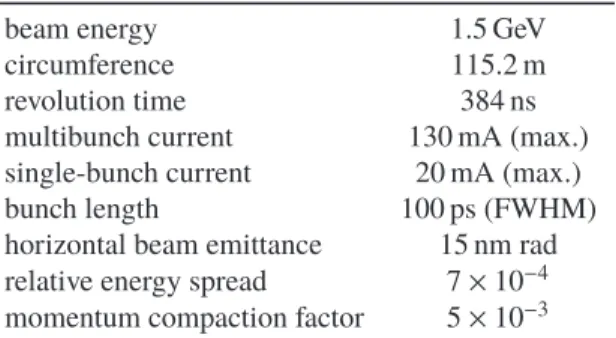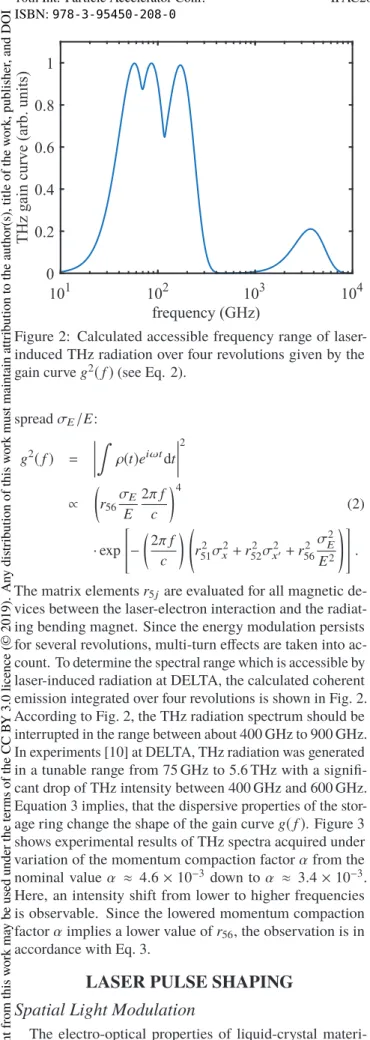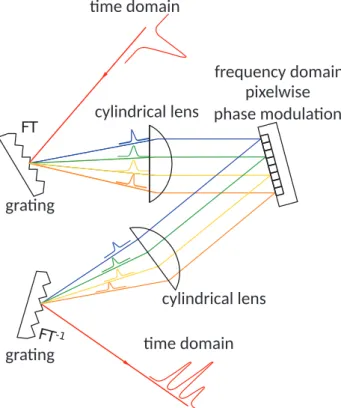PULSE SHAPING METHODS FOR LASER-INDUCED GENERATION OF THz RADIATION AT THE DELTA STORAGE RING ∗
C. Mai † , B. Büsing, A. Glaßl, S. Khan, D. Krieg, A. Meyer auf der Heide,
Center for Synchrotron Radiation (DELTA), TU Dortmund University, Dortmund, Germany
Abstract
At DELTA, a 1.5-GeV electron storage ring operated as a synchrotron light source by the TU Dortmund University, a dedicated beamline is used for experiments with (sub-)THz radiation. Here, an interaction of short laser pulses with elec- tron bunches to give rise to coherently emitted broadband as well as tunable narrowband radiation from 75 GHz to 5.6 THz. For the narrowband operation of the source, a laser pulse with periodic intensity modulation is used. An inter- ferometric approach, the chirped-pulse beating technique, is routinely employed for this purpose. Recently, pulse shaping techniques using spatial light modulators are investigated to gain more flexible control of the laser pulse shape and the spectrotemporal properties of the resulting THz pulses.
INTRODUCTION
The TU Dortmund University operates the 1.5-GeV elec- tron storage ring DELTA as a synchrotron light source. At the dedicated short-pulse facility [1,2], ultrashort VUV [3,4]
and THz pulses are generated based on an interaction be- tween a 40-fs Ti:sapphire laser pulse and a short slice of a single electron bunch inside the electromagnetic undulator U250. The interaction causes a periodic modulation of the electron energy which transforms to a density modulation.
The laser system, which is operated at a repetition rate of 1 kHz, offers pulse energies of up to 8 mJ. Depending on the respective experiment, the U250 is operated in different modes. For the generation of CHG radiation in the UV and VUV regime, it is operated in an optical-klystron-like config- uration consisting of three independent sections, modulator (7 periods), chicane (3 periods) and radiator (7 periods).
Figure 1: Setup for the coherent emission of laser-induced THz radiation (see text for details).
For the coherent emission of laser-induced THz radiation, only a modulator and a bending magnet as a radiative device after a dispersive section are needed. A sketch of the facility is depicted in Fig. 1. THz radiation is emitted coherently
∗
Work supported by the DFG (INST 212/236-1 FUGG), the BMBF (05K13PEC, 05K16PEB) and the state of NRW.
†


